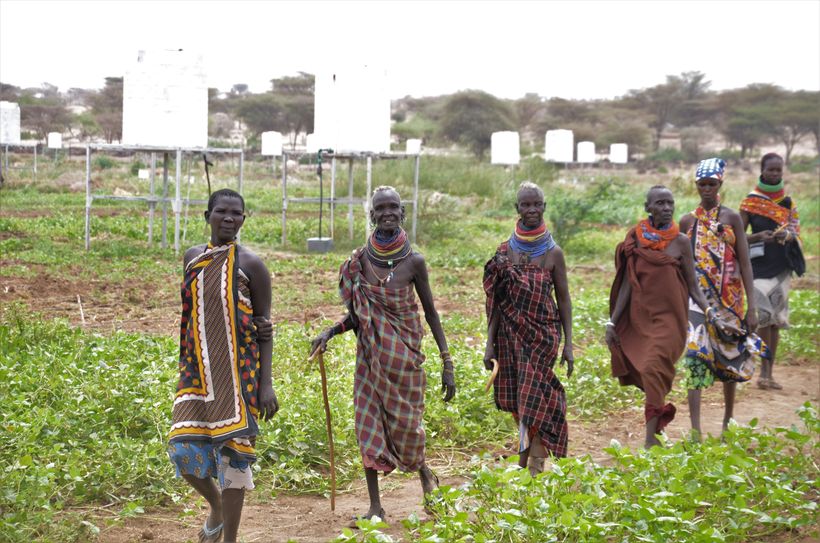* Any views expressed in this opinion piece are those of the author and not of Thomson Reuters Foundation.
This county in northwestern Kenya holds the potential of becoming the bread basket for the entire country
The barren semi-desert Turkana region is home to about a million people. For a large part of the mainly nomadic pastoralist inhabitants of the area today, surviving in what is easily the harshest environment in Kenya is still a struggle.
The second largest county by size, Turkana has among the highest maternal and infant mortality rates in the country, the lowest school enrolment rates and the lowest life expectancy. Also, the Human Development Index of Turkana is significantly lower than the weighted national average.
At this time of the year, people living in rural parts of Turkana County are among the hardest hit by the on-going drought in Kenya. The United Nations and the Government of Kenya approximates that 2.7 million Kenyans are facing acute food shortage and the Government has declared the drought a national disaster.
Things are looking up for Turkana County nevertheless. Not least in the reasons for new optimism is the fact that in 2012, the Government of Kenya announced that substantial oil deposits had been discovered in parts of Turkana County. Though it will be a while before the petrodollars begin to reflect in the economy, indicators such as an increase in services and jobs, expansion in activities in the hospitality industry, and increase in the frequency of flights to the county’s main town of Lodwar suggest a bright future.
Two vast underground aquifers, storing billions of litres of water, have also been discovered. The aquifers could change the lives of people in the region. “This newly found wealth of water opens a door to a more prosperous future for the people of Turkana and the nation as a whole” said Dr Judi Wakhungu, Environment Minister.

It is approximated that the underground aquifers discovered in Turkana could provide the country with water for seventy years. Photo: UNESCO
However, Turkana’s story of progress in recent times is more nuanced and transcends the discovery and extraction of oil. Much more is anticipated, courtesy of the County Government’s decision to walk away from a fragmented approach to a better-coordinated framework of development known as Delivering as One (DaO) with the United Nations in Kenya.
The Turkana Integrated Area-based Development Program is designed to rally international development to support Turkana’s people within the framework of the County Integrated Development Plan. UN Agencies in Kenya, such as UNHCR, UNDP, UNICEF, WFP,, WHO, UN Women, UNFPA, IOM and FAO together with the World Bank are delivering as one.
The approach rallies international development actors to render support within the DaO framework and under the leadership of the County Government. This embeds development projects and programs into government development plans and institutions. In so doing, programs stand to benefit from better alignment of priorities and strategies, increased transparency for results, reduced transaction costs due to better coordination and reduced duplication of efforts and resources.
These are the transformational structures that were apparent recently when UN staff from 10 African countries visited Turkana for a first-hand experience of the impact of the new approach.
The team learned how the County is channeling available resources towards specific, tangible projects under specific development sectors. The Napuu I Drip Irrigation Scheme for instance demonstrates how simple technologies can be used to promote food security. By using water from underground aquifers and solar power for drip irrigation, the sixty-five-acre piece of land has been turned into a reliable source of food for over 150 households.
Taken to scale, Turkana county holds the potential of becoming the bread basket for all of Kenya.
The Turkana Wellness Centre, dedicated to the recovery of victims of sexual and gender-based violence, and the fairly well equipped maternity wards, are additional milestones which ought to be celebrated in a county where women were previously deprived of maternal healthcare.

The Turkana Wellness Center. Photo UNRCO
In designing and crafting both a healthy and wealthy Turkana, there has been emphasis on inclusive economic growth. The Turkana Tannery, on the outskirts of the county’s headquarters, Lodwar, illustrates the huge potential the livestock sector has for contributing to economic growth through a robust leather value chain. The Tannery is able to convert raw hides and skins, to top quality leather products such as bags, belts and sandals. Sustained economic growth has the potential to further propel the communities in Turkana from poverty, marginalisation, under-development, conflict and inequality into prosperity and sustainable development.

Granted, many of the programs that have so far taken off are in a small scale. To reach a significant part of a population of close to one million people spread over an area of 68,680 square kilometers, all the programmes will have to be scaled up significantly. Resource mobilisation is therefore central to the success of the framework and stakeholders are already working on modalities of a multi-partner trust fund.
The Delivering as One approach is showing early indication that the previously neglected frontiers of Kenya can leapfrog transformative growth and become economic powerhouses, where under development, food insecurity, nutritional stress and poverty, become words of the past.
Now we have to go to scale.


